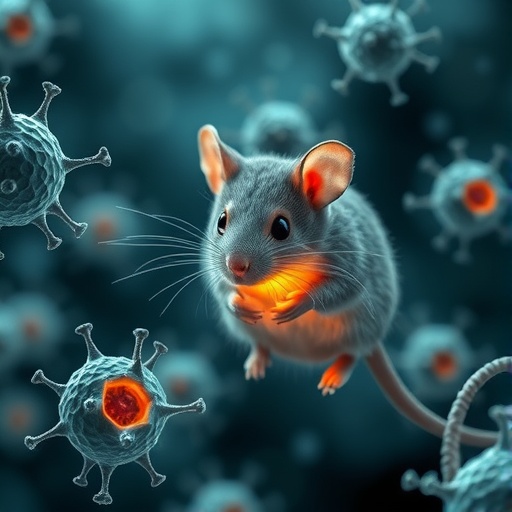A groundbreaking study from Washington University School of Medicine in St. Louis and Baylor College of Medicine has revealed a novel cellular mechanism by which injured cells accelerate healing. This newly identified process—called “cathartocytosis”—involves cells actively ejecting waste materials through membrane-bound cavities, effectively “vomiting” cellular debris in order to rapidly switch into a stem cell-like state and promote tissue regeneration. This discovery upends conventional understanding of cellular clean-up during injury and opens promising avenues for regenerative medicine and cancer research.
Traditionally, the process of cellular repair has been thought to rely heavily on lysosomes, tiny organelles responsible for the gradual digestion and recycling of damaged proteins and organelles. These lysosomal pathways, while efficient for routine maintenance, are inadequate in the face of acute injury when rapid reprogramming of cells is essential. The new data demonstrate that cells can bypass slow, intracellular degradation pathways by jettisoning unwanted cellular components outside the cell environment, enabling faster cellular transformation that is critical for healing.
In their study, published online in Cell Reports, the researchers used a mouse model of stomach injury to observe this phenomenon in unprecedented detail. The stomach’s epithelial cells—key players in protecting and regenerating the gastric lining—were seen creating transient cavities or pores in their membranes, through which large amounts of cellular debris were expelled. This intense cellular purging was observed occurring simultaneously in multiple cells, suggesting that cathartocytosis is a coordinated and fundamental component of the regenerative response.
Jeffrey W. Brown, MD, PhD, assistant professor of medicine at WashU Medicine and the study’s first author, described the process as a necessary decluttering event. “The mature cellular machinery of a differentiated cell, while well-suited for its usual tasks, becomes an obstacle during injury repair,” Brown explained. “Cathartocytosis is a rapid, albeit somewhat messy, shortcut cells use to shed this machinery so they can quickly revert to a primitive, stem cell-like state ready for proliferation and repair.”
This mechanism represents a new layer within the regenerative framework known as paligenosis, previously characterized as the reprogramming of mature cells into stem-like progenitors able to regenerate damaged tissues. Jason C. Mills, MD, PhD, senior author and now at Baylor College of Medicine, first described paligenosis in 2018. The current work builds on that foundation by revealing that cathartocytosis is a key step within this process, facilitating the massive cellular remodeling required for tissue regeneration.
Electrifyingly, the discovery that cells actively eject waste into their external environment challenges previously held assumptions that all cellular remodeling must occur in enclosed intracellular compartments. Early observations of extracellular debris during paligenosis were originally discounted but have now been recognized as a purposeful and widespread biological phenomenon. This extracellular purging presumably serves to accelerate reprogramming by physically removing molecular roadblocks that would otherwise slow the cell’s transformation.
Despite the benefits of cathartocytosis in acute injury repair, the researchers caution about its potential downsides. The process is fast but disorderly, releasing cellular waste products into the surrounding tissue that may exacerbate local inflammation. In cases of chronic injury or infection, such as persistent Helicobacter pylori infection in the stomach, ongoing cathartocytosis may contribute to a-inflammatory microenvironment, fueling cycles of damage and repair that increase the risk of oncogenic mutations and cancer development.
Indeed, the relationship between cathartocytosis and cancer arises as a double-edged sword. While the mechanism underlies critical regenerative responses, its dysregulation may enable precancerous cells to thrive. As stem cell-like cells multiply to repair damage, those harboring mutations gain a proliferative advantage in inflamed tissues, potentially seeding tumorigenesis. The expelled cellular debris itself could indicate ongoing pathological processes and serve as an early marker of neoplastic progression.
Recognizing this, Brown and his collaborators have developed a novel antibody capable of binding to waste products ejected during cathartocytosis. This tool offers the exciting potential to detect and quantify cathartocytosis in tissue samples, facilitating early diagnosis of precancerous states and allowing for intervention before cancer fully develops. The antibody could become a critical instrument in gastrointestinal cancer surveillance and even in monitoring inflammatory conditions linked to chronic tissue injury.
Early detection aside, the study suggests future therapeutic avenues to modulate cathartocytosis. By better understanding this cellular cleanse, it may be possible to enhance its beneficial regenerative effects while mitigating its contribution to chronic inflammation and tumorigenesis. For example, selective inhibition of cathartocytosis in damage-prone or inflammation-susceptible tissues might reduce cancer risk without compromising healing.
More broadly, although this investigation focused on stomach epithelial cells, the authors speculate that cathartocytosis likely operates in other organ systems following injury. The universality of reprogramming to stem cell-like states in regeneration suggests that similar waste-clearing mechanisms could be vital in healing processes across the liver, pancreas, kidneys, and beyond, setting the stage for broad biomedical impact.
This discovery redefines our understanding of cellular plasticity and injury response, illuminating how cells navigate the delicate balance between repair and disease. The identification of cathartocytosis not only enhances the molecular narrative of regeneration but also offers practical insights for diagnosing and treating cancers with inflammatory origins. As research continues, cathartocytosis may emerge as a cornerstone concept in regenerative biology and oncology.
Subject of Research: Cellular mechanisms of injury response and regeneration
Article Title: Cathartocytosis: jettisoning of cellular material during reprogramming of differentiated cells
News Publication Date: 20-Jul-2025
Web References:
- Publisher DOI link: http://dx.doi.org/10.1016/j.celrep.2025.116070
- Washington University Division of Gastroenterology: https://gastro.wustl.edu/
- WashU Medicine: https://medicine.washu.edu/
References:
Brown JW, Lin X, Nicolazzi GA, Liu X, Nguyen T, Radyk MD, Burclaff J, Mills JC. Cathartocytosis: jettisoning of cellular material during reprogramming of differentiated cells. Cell Reports. Online July 20, 2025. DOI: 10.1016/j.celrep.2025.116070.
Image Credits: Jeffrey Brown
Keywords: Stomach, Cellular regeneration, Paligenosis, Cathartocytosis, Stem cell reprogramming, Cellular waste jettison, Gastric injury, Chronic inflammation, Cancer risk, Helicobacter pylori, Regenerative medicine, Cell Reports




